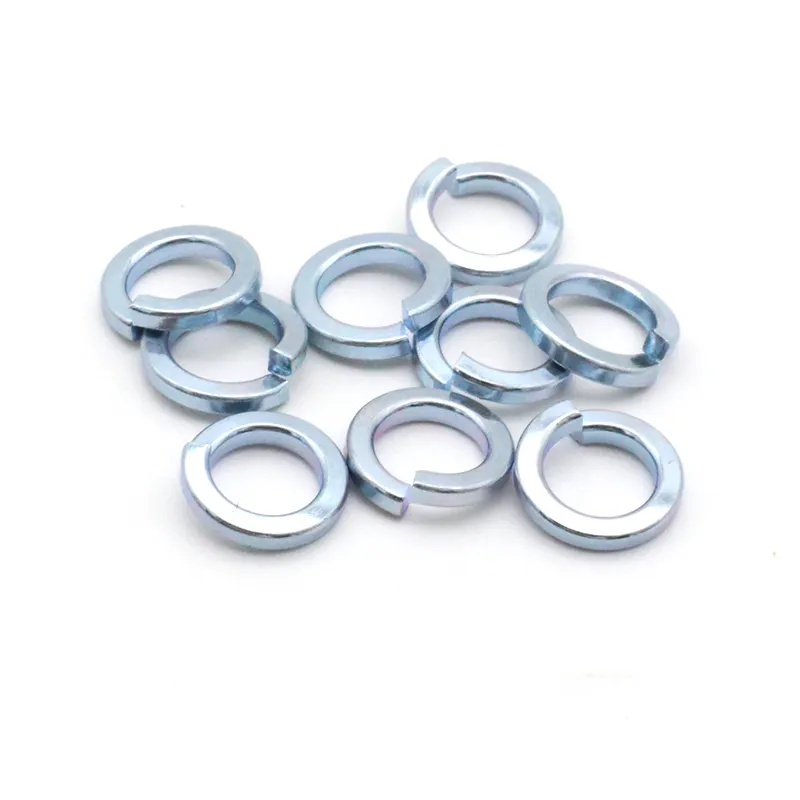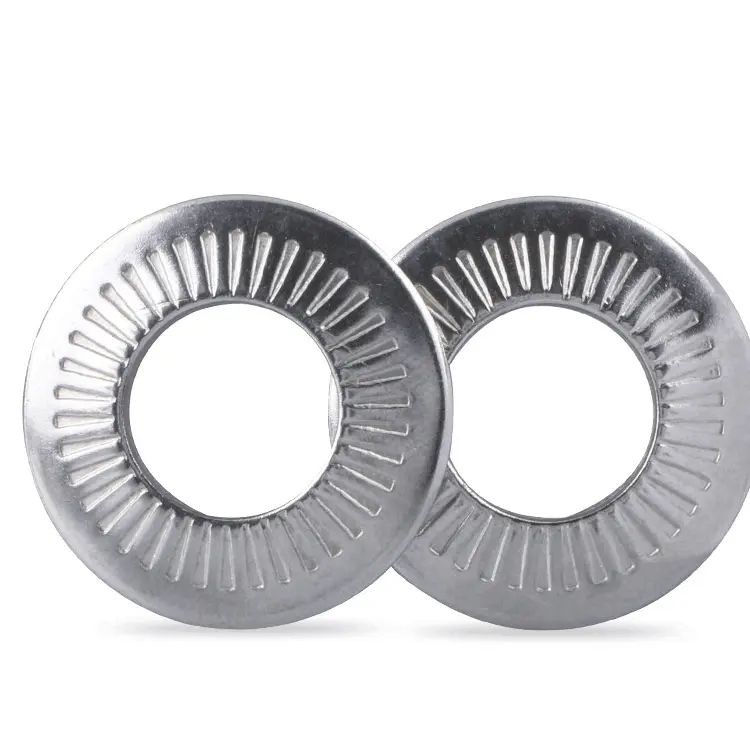Spring Washers
A spring washer, also known as a disc spring washer, is a type of mechanical fastener used to provide tension and prevent loosening in threaded fastener assemblies. It is a thin, flat washer with a slightly conical shape that creates a spring-like action when compressed. Spring washers are typically made from various materials, including steel, stainless steel, and other alloys.
The primary function of a spring washer is to create a preload force between the fastener and the joint it is securing. This helps to maintain tension in the assembly and prevents the fastener from becoming loose due to vibrations, thermal expansion/contraction, or other external forces. When the joint experiences movement or vibrations, the spring washer absorbs some of the shock and maintains a continuous tension on the fastener.
There are different types of spring washers, including:
1. Belleville Washer: Also known as a conical washer, it has a cone-like shape that provides high spring force in a small space.
2. Wave Washer: This washer has a wavy or wave-like shape that offers good load distribution and stress relief in assemblies.
3. Split Washer: A split washer has a split or helical cut, creating a spring-like effect when compressed.
4. Curved Spring Washer: It has a curved shape that provides a larger surface area for better load distribution.
5. Finger Spring Washer: This type has protruding fingers that create additional spring tension.
Spring washers are often used in various industries such as automotive, machinery, construction, and manufacturing. They are particularly valuable in applications where maintaining proper tension is crucial to prevent fastener loosening and maintain the integrity of the joint over time.


Specification of spring washers:
| Type: | The specific type of spring washer, such as Belleville washer, wave washer, split washer, curved spring washer, etc. |
|---|---|
| Nominal Size: | The nominal size of the washer, often referred to by its diameter (e.g., M6, M12) or other standard sizing measurements. |
| Material: | The type of material the spring washer is made from, which could be steel, stainless steel, or other materials depending on the application's requirements. |
| Finish: | The surface treatment or finish applied to the washer for corrosion resistance or appearance (e.g., plain, zinc-plated). |
| Thickness: | The thickness of the spring washer, which affects its spring force and ability to maintain tension. |
| Outer Diameter: | The outer diameter of the washer, which might vary based on the specific design. |
| Inner Diameter: | The inner diameter of the washer, which should match the diameter of the threaded fastener. |
How do we ensure the quality of spring washers?
| Control Method | Detail |
|---|---|
| Material Inspection: | Verify the material's composition, heat treatment, and quality upon receipt. Conduct metallurgical analysis to ensure the material properties meet the standards. |
| Process Control: | Implement strict process control measures for heat treatment, machining, threading, and any other manufacturing steps. Maintain consistent process parameters to ensure uniform quality. |
| Inspection Points: | Introduce inspection points at various stages of manufacturing to check for defects, dimensions, and quality. Inspect threading, dimensions, surface finish, and other critical parameters. |
| Sampling and Testing: | Regularly sample products for testing, such as tensile testing, hardness testing, and metallurgical analysis, to ensure they meet the required specifications. |
| Thread Inspection: | Thoroughly inspect threading using proper thread gauges to ensure accurate dimensions and fit with mating components. |
| Traceability: | Implement a traceability system to track each fasteners journey from raw material to final product. This aids in accountability and recalls if necessary. |
